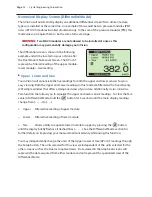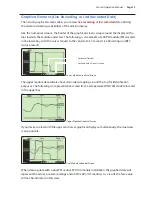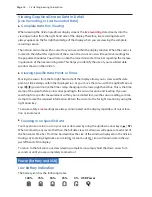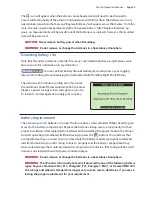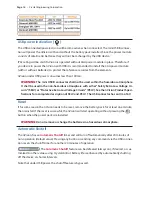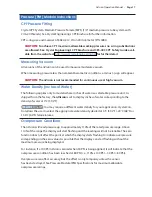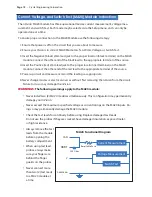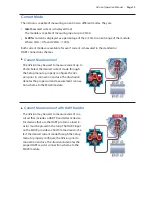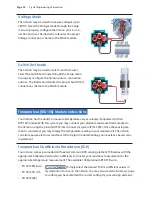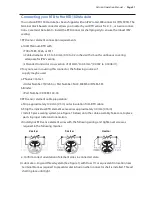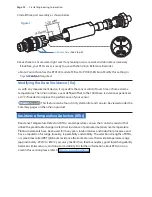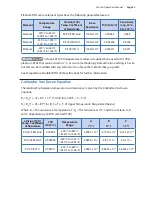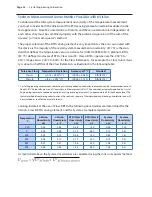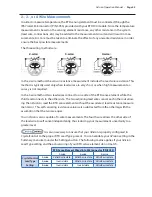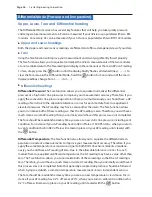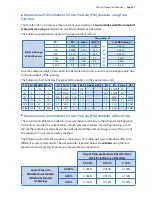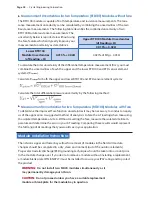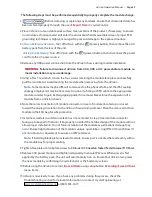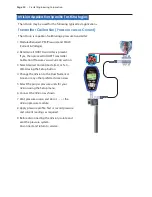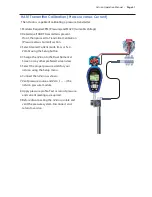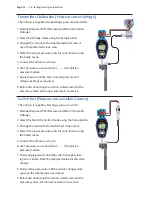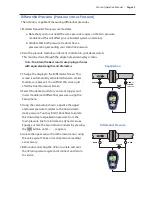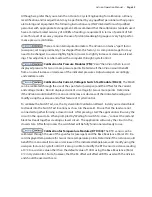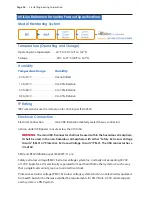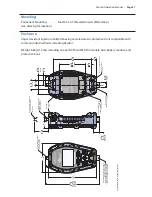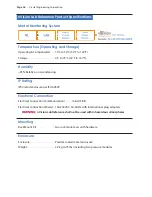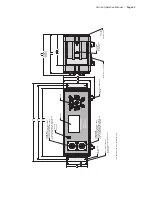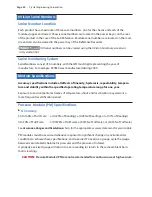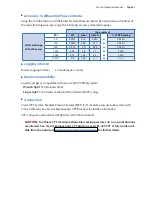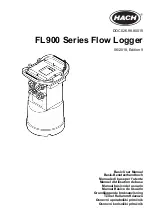
Page 26
•
Crystal Engineering Corporation
Differential.Mode.(Pressure.and.Temperature)
Upper,.Lower,.Tare.and.Differential.Reading
The Differential Mode screen has several key features that will help you take quality pressure
and temperature measurements. ∆P can be measured if your nVision is populated with two PM
modules. Conversely, ∆T can be measured if your nVision is populated with two RTD100 modules.
.
X
Upper.and.Lower.Readings
Both the Upper and Lower sensor readings are filtered and offers a dampened view of your data.
.
X
Tare
Using the Tare function will improve your measurement uncertainty significantly if used properly.
The Tare function allows you to equalize (normalize) the nVision measurements of the two modules
at a non-ambient datum. The Tare reading will display in the same units as the main ∆P or ∆T reading.
To Tare, simply press the
button until the display briefly flashes all dashed lines (- - - - -). To
clear the Tare value in the Differential Mode, hold the
button for 3 seconds until the main
display readings change from (- - - - -) to (- - -).
.
X
Differential.Readings
Differential Pressure:
The Tare function allows you to equalize (normalize) the differential
pressure at a high static line pressures to improve your measurement accuracy. Therefore, if you
apply the same static line pressure signal to both sensors simultaneously, you should have a ∆P
reading of zero. Due to the allowable tolerance or error for each module from true applied at
elevated pressures, the ∆P reading may have a value other than zero. The Tare function allows
you to normalize both of these readings so that the ∆P reading is zero. Therefore, you will have a
much more accurate ∆P reading than you normally would have if this process was not completed.
The Tare should be reestablished every time you are at a new static line pressure, including vent
condition. For instance if your ∆P reading has 8 inH20 of Tare at 1500 PSI static, when you return
to vent condition this 8 inH20 of Tare will remain in place on your ∆P reading until cleared with
the
button.
Differential Temperature:
The Tare function also allows you to equalize the differential tem-
perature or resistance measurements to improve your measurement accuracy. Therefore, if you
apply the same temperature or resistance signal to both RTD100 sensor elements simultane-
ously you should have a ∆T reading of zero. Due to the allowable tolerance or error for each
module from true applied at different temperatures, the ∆T reading may have a value other than
zero. The Tare function allows you to normalize both of these readings so that the ∆T reading is
zero. Therefore, you will have a much more accurate ∆T reading than you normally would have if
this process was not completed. Note that generally accepted lab practices should be followed
when trying to establish a common temperature measurement on two independent sensors.
The Tare should be reestablished every time you are at a new temperature or resistance. For in-
stance if your ∆T reading has 0.2°C of Tare at 220°C, when you return to ambient conditions this
0.2°C of Tare will remain in place on your ∆T reading until cleared with the
button.
Summary of Contents for nVision Lab Reference Recorder
Page 1: ...C R Y S T A L engineering corporation Operation Manual Reference Recorder Lab Reference ...
Page 6: ......
Page 67: ......

